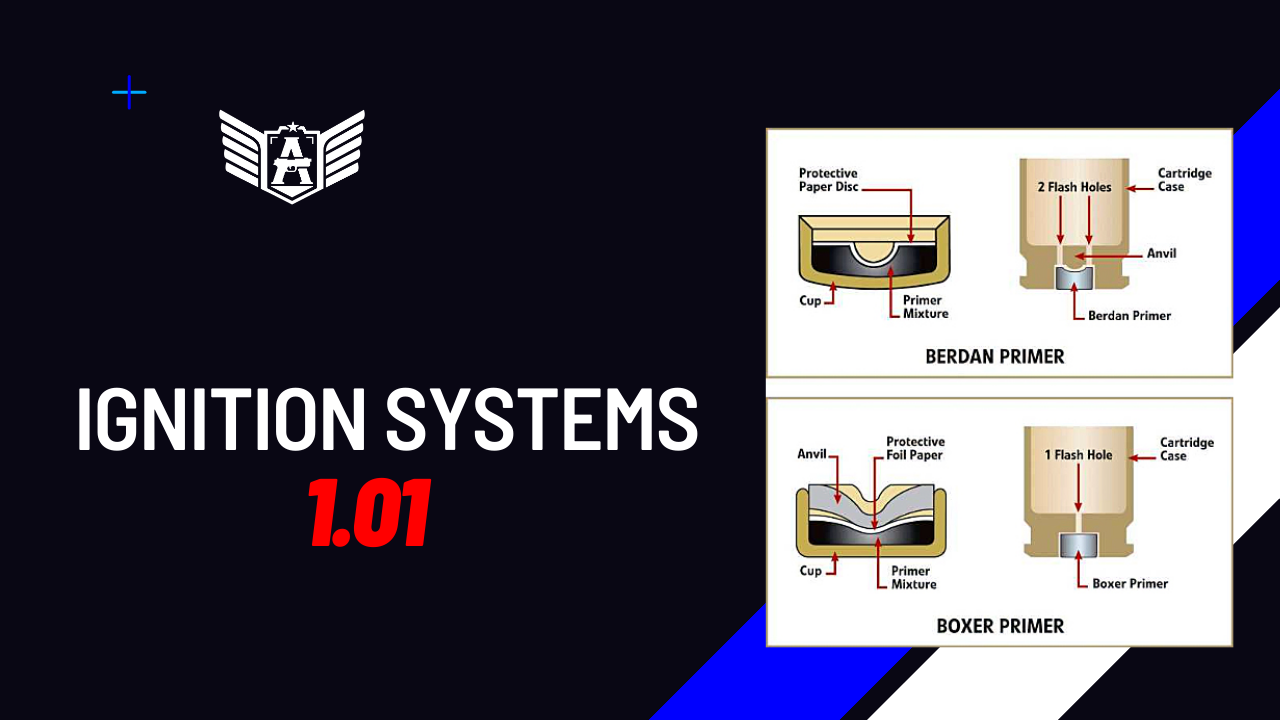
The history of ignition systems and propellants in firearms is a fascinating journey of innovation and technological advancement. From the earliest methods of ignition to the sophisticated systems used in modern firearms, understanding the evolution of these components is crucial for enthusiasts and professionals alike.

Early Ignition Systems:
In the earliest firearms, ignition was a rudimentary affair, relying on methods such as direct flame application or the use of fuses and wicks to ignite the propellant charge. These methods evolved rapidly with mechanical advancements, leading to the development of more reliable mechanisms like the wheel lock and flintlock.

Invention of the Primer:
The pivotal moment in the evolution of ignition systems came with Alexander John Forsyth’s invention of fulminate, a volatile compound used in the first primers. Forsyth’s creation, derived from subjecting metals to fulmanic acid, particularly mercury, laid the foundation for modern primer technology. However, the corrosive nature of mercury fulminate led to the development of alternative compounds like potassium chloride and antimony sulfide by the late 19th century.
Transition to Noncorrosive Primers:
By the mid-20th century, lead styphnate-based primers had replaced their corrosive counterparts, addressing concerns about metal corrosion caused by residue. Concurrently, noncorrosive primer compounds emerged, marking a significant shift in primer chemistry to mitigate environmental and health risks associated with lead exposure.
Center-Fire Cartridges:

Center-fire cartridges represent a significant advancement in ammunition technology. These cartridges feature a primer seated in the base of the casing, which is struck by a firing pin or striker to initiate ignition. They come in various sizes and configurations, catering to diverse firearm applications. The industry’s focus has shifted towards lead-free or clean-burning primer formulations, reflecting a commitment to environmental sustainability and user safety.
Berden Priming vs. Boxer Priming:

Two primary center-fire primer designs exist: Berden and Boxer. Berden priming, patented by American Hiram Berden in 1866, involves a cup containing the priming compound and an anvil, which is integrated into the cartridge casing. In contrast, Boxer priming, developed by Edward M. Boxer in England, features a separate anvil and a single, larger flash hole. While both systems are functionally similar, Boxer priming is preferred in the United States for its ease of reloading fired casings.
The Berdan primer was designed in 1866 by Colonel Berdan of the US Army Ordnance Department. In this system, the anvil is actually part of the cartridge case in the form of a small peg in the primer pocket.
Around the anvil are a number of small flash holes to permit the passage of the ignition flame from the primer to the propellant. Due to the ease and low cost of manufacture, Berdan primers are used mainly in military ammunition.
The Boxer primer was developed in 1866 by Colonel Boxer of the Laboratory at the Royal Woolwich Arsenal, England.
In this type of primer, the anvil is a small bent disc of steel which fits into the cup making the primer completely self – contained.
The flash hole in the cartridge case is centrally located and as it is of a relatively large diameter, it is thus quite easy to push out the fired cup with a thin rod for reloading purposes. Boxer – primed ammunition is almost exclusively used in commercial ammunition.
Forensics Digest
Rim-Fire Cartridges:

Rim-fire cartridges represent a distinct category of ammunition. Unlike center-fire cartridges, rim-fire cartridges lack a primer seated in the base of the casing. Instead, they feature an ignition compound spread around the rim’s periphery. Impact on any part of the rim compresses the charge, initiating ignition. Historically significant, rim-fire cartridges are now predominantly used in smaller caliber firearms, with military applications phased out in favor of self-contained cartridge technology.
Understanding the intricate details of ignition systems and propellants underscores the remarkable progress achieved in firearm technology over the centuries. From humble beginnings to cutting-edge innovations, these components continue to shape the performance and safety standards of modern firearms.

Bibliography
(1) Sellier & Bellot https://www.sellier-bellot.cz
(2) CBC Global Ammuntion – https://cbcglobal-ammunition.com/
(3) Walker, R. E. (2012). Cartridges and firearm identification. CRC Press.
(4) Forensic Digest https://forensicsdigest.com/
(5) Ciarlo, N. C., Charlin, J., Alberti, J., Buscaglia, S., Vivar Lombarte, G., & Geli Mauri, R. (2019). Size and shape analysis of gunflints from the British shipwreck Deltebre I (1813), Catalonia, Spain: a geometric morphometric comparison of unused and used artefacts. Archaeological and Anthropological Sciences. doi:10.1007/s12520-019-00925-1




